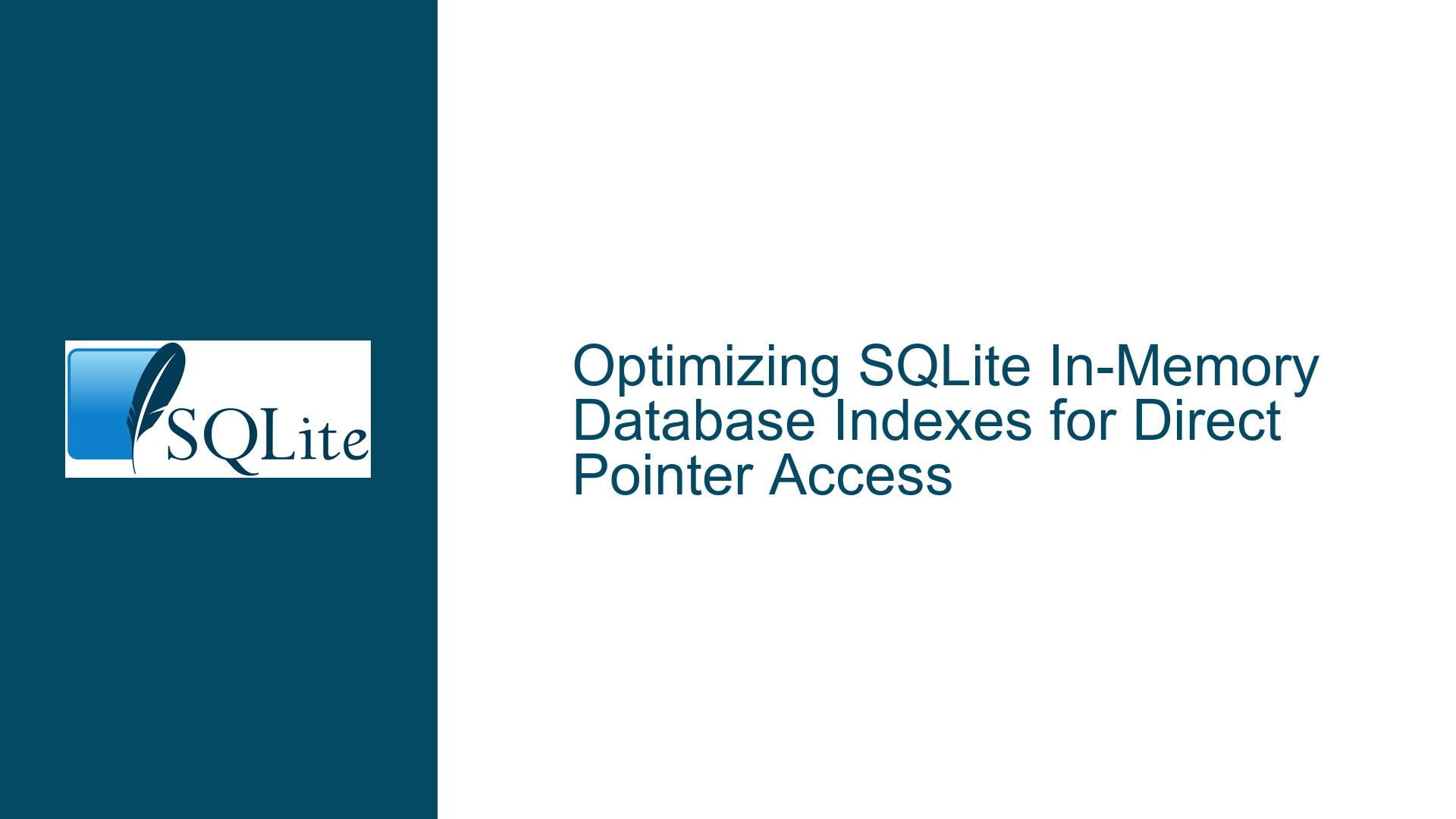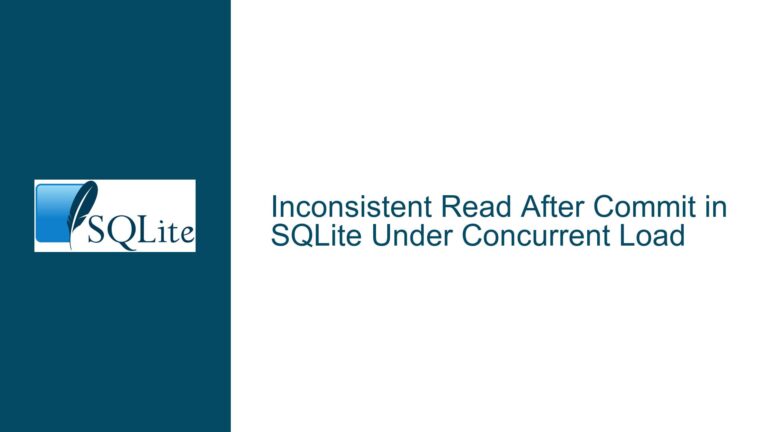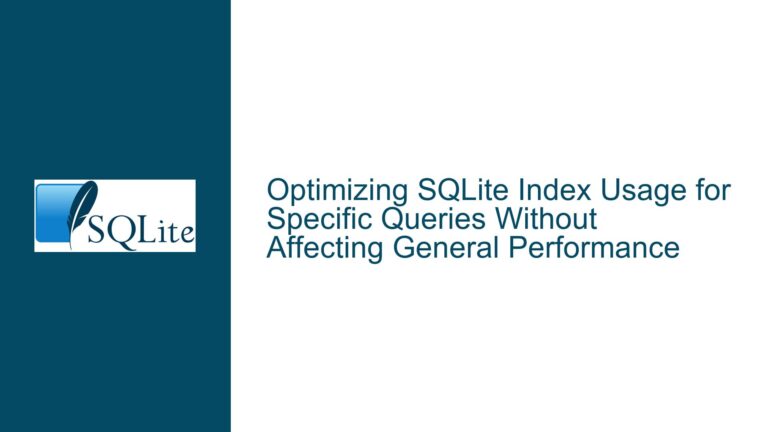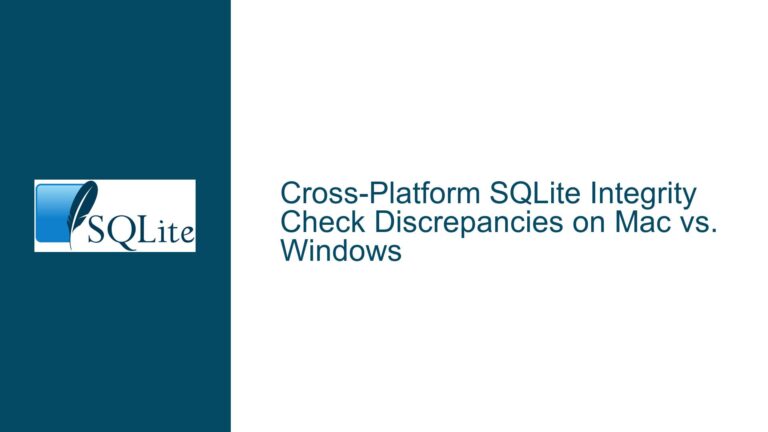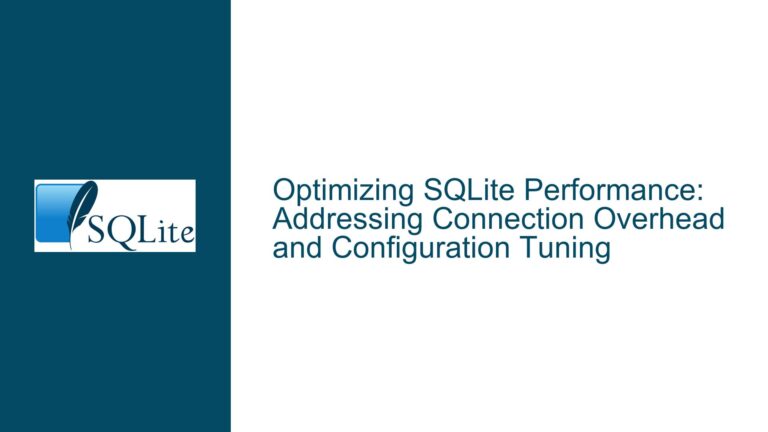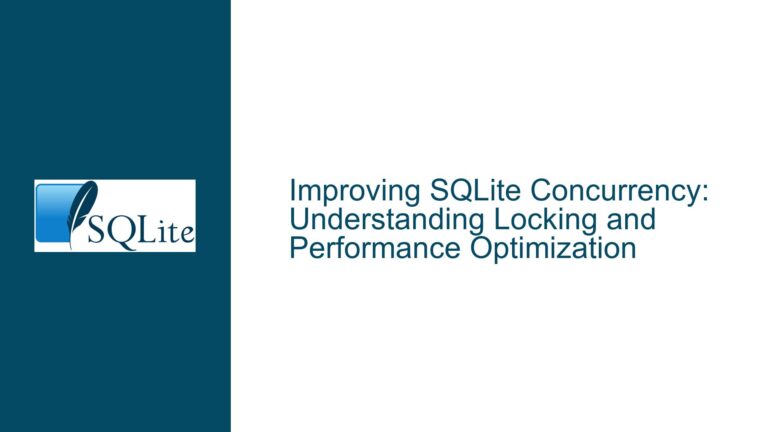Optimizing SQLite In-Memory Database Indexes for Direct Pointer Access
SQLite In-Memory Database Index Performance and Pointer Access
When working with SQLite in-memory databases, one of the most common performance considerations is the efficiency of index lookups. In a typical scenario, SQLite uses a two-step process for indexed queries: first, it performs a binary search on the index to find the rowid, and then it performs another binary search on the main table to retrieve the actual data. This process is efficient for on-disk databases, but for in-memory databases, where data access is significantly faster, the question arises: can we optimize this further by using direct pointers instead of rowids?
The core issue here revolves around whether SQLite can be optimized to use direct memory pointers in its indexes for in-memory databases, thereby reducing the number of binary searches required to retrieve data. This would theoretically improve performance by eliminating the need for the second binary search on the main table. However, as we will explore, this optimization is not straightforward and comes with several trade-offs.
Interrupted Write Operations Leading to Index Corruption
One of the primary reasons SQLite does not use direct pointers in its indexes, even for in-memory databases, is the potential for data corruption during write operations. In a database system, data is frequently updated, deleted, or reorganized. If an index were to store direct pointers to memory locations, any change in the underlying data structure would require updating all corresponding index entries. This is particularly problematic in scenarios where the database undergoes frequent modifications, such as during a VACUUM operation or when records are moved to maintain a clustered index.
For example, consider a scenario where a record is deleted from the main table. If the index stores a direct pointer to that record, the pointer would become invalid as soon as the record is deleted. Similarly, if a record is moved to a different memory location (e.g., during a rebalance operation), all indexes pointing to that record would need to be updated. This would introduce significant overhead and complexity, negating any performance gains from using direct pointers.
Moreover, SQLite’s design philosophy emphasizes simplicity and reliability. The current implementation, which uses rowids as references, ensures that the database remains consistent even during complex operations. Introducing direct pointers would require a significant overhaul of the database engine, increasing the risk of bugs and making the system more difficult to maintain.
Implementing PRAGMA journal_mode and Database Backup
Given the challenges associated with using direct pointers in indexes, what are the alternatives for optimizing SQLite in-memory database performance? One approach is to leverage SQLite’s existing features, such as the PRAGMA journal_mode setting, to improve performance without compromising data integrity.
The PRAGMA journal_mode setting controls how SQLite handles transaction logging, which is crucial for ensuring data consistency. In an in-memory database, you can set the journal mode to MEMORY or OFF to reduce the overhead associated with transaction logging. However, this comes with the trade-off of reduced durability, as changes will not be logged to disk. For in-memory databases, where durability is often less of a concern, this can be a viable optimization.
Another important consideration is the use of composite indexes. As mentioned in the discussion, creating a composite index on the columns used in your queries can significantly reduce the number of binary searches required. For example, if you frequently query the price column based on the fruit column, you can create a composite index on both columns:
CREATE INDEX fruit_price ON fruitsforsale(fruit, price);
With this index in place, the query:
SELECT price FROM fruitsforsale WHERE fruit='Peach';
Would only require a single binary search on the fruit_price index, as both the fruit and price columns are included in the index. This approach avoids the need for a second binary search on the main table, effectively achieving the performance improvement that direct pointers would provide, but without the associated risks.
However, it’s important to note that composite indexes come with their own trade-offs. They consume additional storage space, which can be a concern for large databases. Additionally, they introduce overhead during write operations, as the database must update multiple indexes whenever a record is inserted, updated, or deleted.
For scenarios where you need to maintain a reference to a specific record for later access, SQLite does not provide a built-in mechanism to store direct pointers to memory locations. However, you can achieve similar functionality by using virtual tables. Virtual tables allow you to define custom storage and retrieval mechanisms, which can be tailored to your specific use case. For example, you could implement a virtual table that stores records in uncompressed form in memory, allowing you to maintain direct pointers to those records. However, this approach requires significant development effort and is not suitable for all applications.
In conclusion, while the idea of using direct pointers in SQLite indexes for in-memory databases is appealing from a performance perspective, it is not currently feasible due to the complexities and risks involved. Instead, you can achieve similar performance improvements by using composite indexes and optimizing SQLite’s journal mode settings. For advanced use cases, virtual tables offer a flexible, albeit complex, solution for maintaining direct references to in-memory data. By understanding these trade-offs and leveraging SQLite’s existing features, you can optimize your in-memory database performance without compromising data integrity or reliability.
